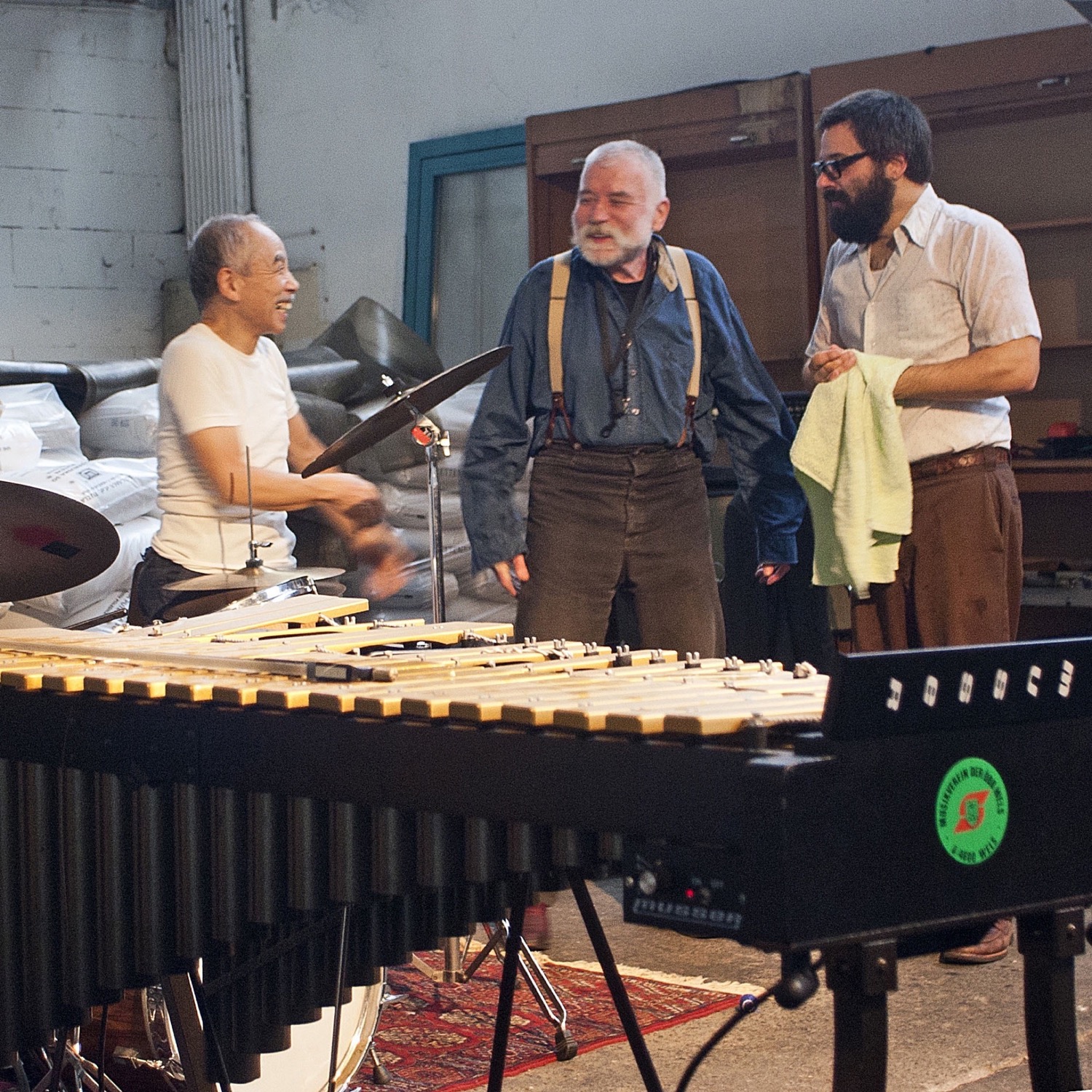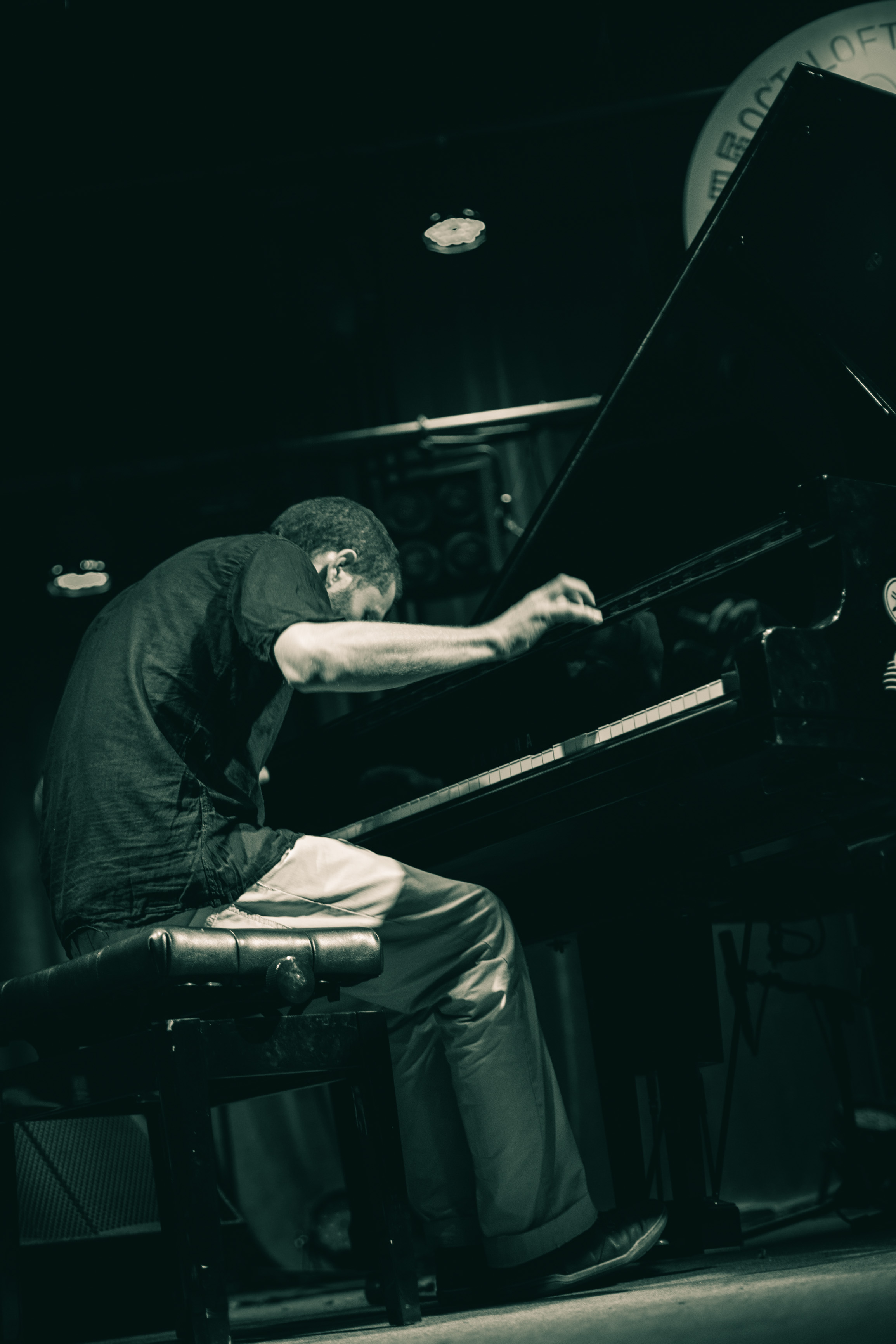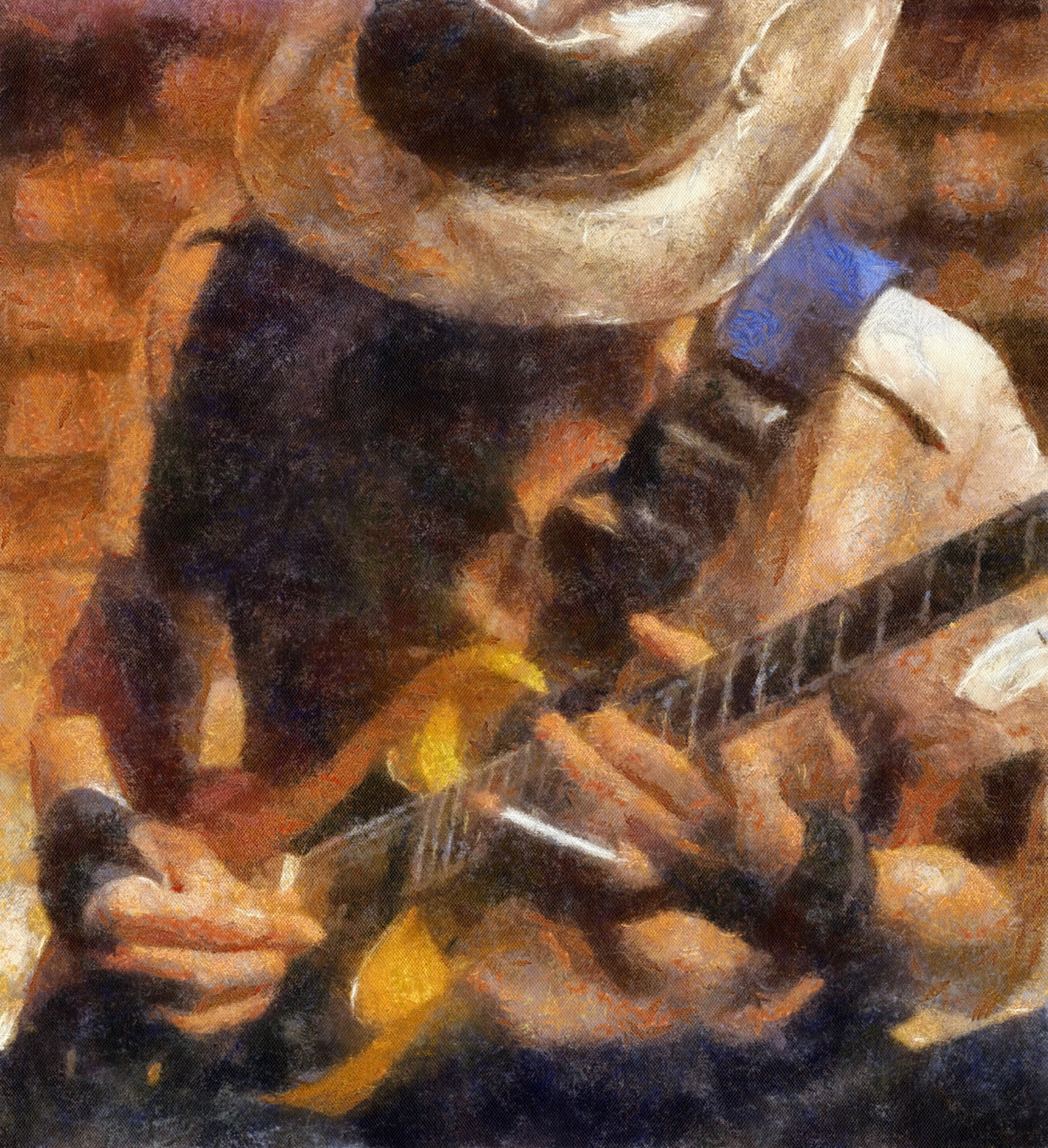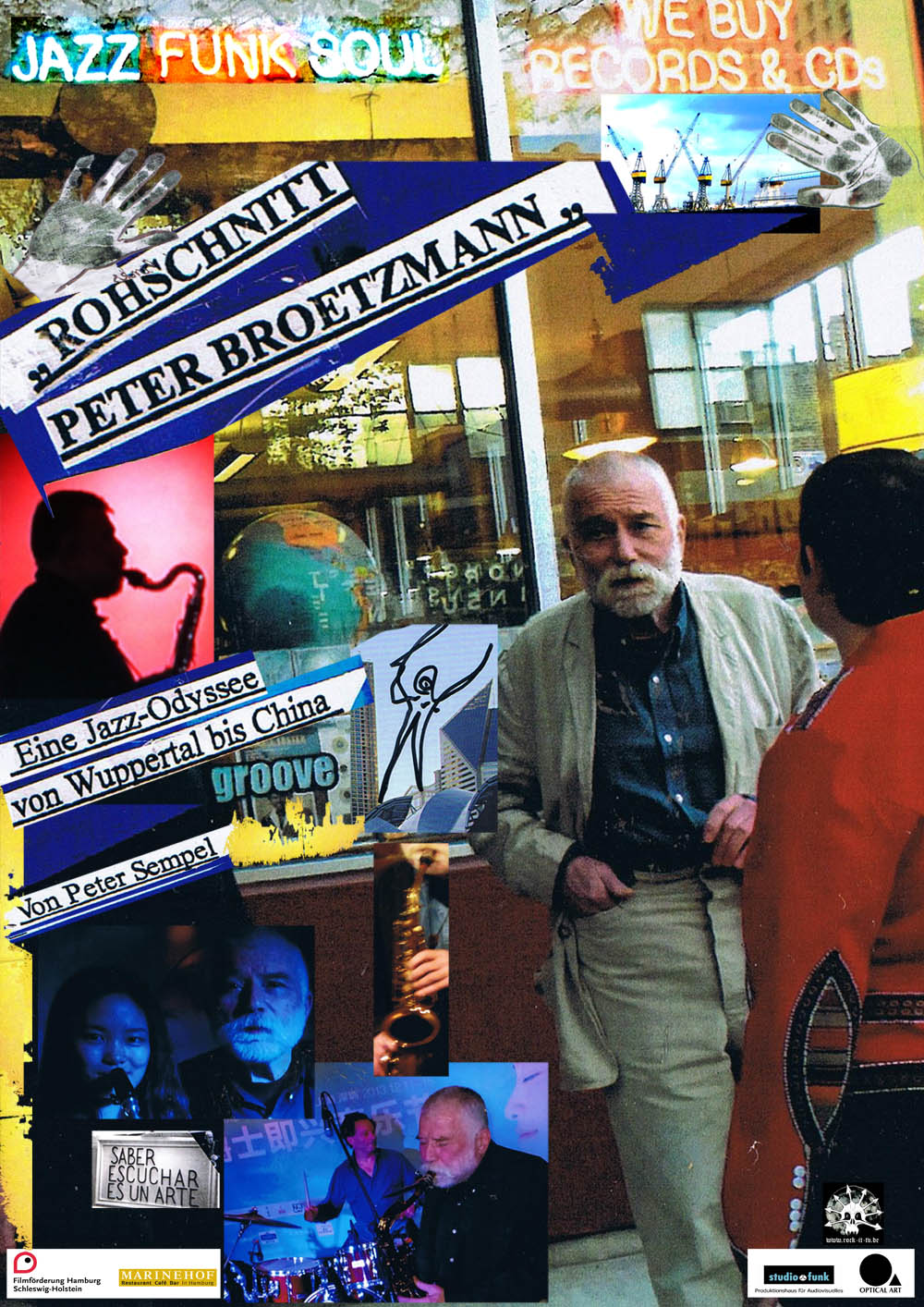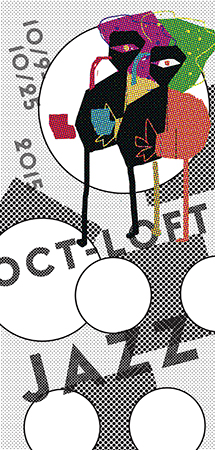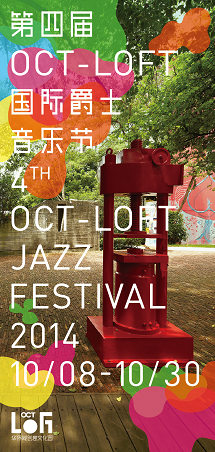Peter Brötzmann三重奏
Peter Brötzmann Trio
德国 Germany / 日本 Japan / 美国 U.S.A.
时间 Time
2015.10.18 21:20 – 22:20
场地 Venue
华侨城创意文化园北区B10现场 B10 Live, North District of OCT-LOFT
演出者 Artists
Peter Brötzmann – 中音萨克斯 Alto Saxophone / 次中音萨克斯 Tenor Saxophone / 降B调单簧管 Bb-Clarinet / Tárogató
丰住芳三郎 Sabu Toyozumi – 鼓 Drums / 二胡 Erhu
Jason Adasiewicz – 颤音琴 Vibraphone
Peter Brötzmann
Peter Brötzmann年轻时在伍珀塔尔学习油画,并参加了激流派运动[1],但他对当时画廊和展览的状况很不满意。还在学校的时候,他经历了第一次真正的爵士现场——美国爵士萨克斯手、单簧管手和作曲家Sidney Bechet的演出,并给他留下了很深的印象。
一开始他自学了很多种单簧管,后来又转学萨克斯风,在演奏tárogató[2]上也颇有造诣。低音提琴手Peter Kowald是他第一个合作的乐手。不过Brötzmann从来没有放弃过艺术训练,他的专辑封面大多数都是他自己设计的。
Brötzmann的第一张专辑《For Adolphe Sax[3]》发行于1967年,他与Kowald和鼓手Sven-Åke Johansson合作完成。在欧洲政治动乱的1968年,专辑《Machine Gun》面世,这张八重奏唱片常被认为是最杰出的自由爵士专辑之一。1969年,Brötzmann携参与《Machine Gun》的众多音乐家——包括鼓手Han Bennink、钢琴家Fred Van Hove和次中音萨克斯手Evan Parker,加上英国即兴吉他手Derek Bailey,一起录制了《Nipples》。他们的下一张唱片顺理成章地叫作《More Nipples》,比前作更加刺耳。
因为多人乐团在运作巡演时都会因为阵容过于庞大遇到很多困难,因此Brötzmann逐渐把他的乐团缩减为与Han Bennink和Fred Van Hove合作的三重奏。前者还和Brötzmann合作了发行于1977年的《Schwarzwaldfahrt》,一张在德国黑林山的深林里录制的二重奏专辑——Brötzmann吹奏萨克斯,而Bennink用树木和树林里找到的其他物件演奏打击乐。
随后Brötzmann也曾重走多人乐团之路。在1981年,他与萨克斯手Frank Wright、Willem Breuker,小号手近藤等則(Toshinori Kondo),长号手Hannes Bauer、Alan Tomlinson,钢琴家Alexander von Schlippenbach,鼓手Louis Moholo和贝斯手Harry Miller一起做了一档电台节目,该节目随后被灌制成专辑《Alarm》发行。
Brötzmann一直保持着活跃度,定期举行巡演和录制唱片。他迄今以乐团领袖的身份发行了超过50张唱片,参与录制的唱片数量则更多。
[1] 激流派运动:1960年代盛行在欧美的前卫艺术运动。源于达达主义的反保守主义观念,衍生出一种新的艺术——非艺术。艺术家们不去创作绘画和物件,反音乐,反诗歌,而去表现处于初始状态的生活片段。认为一切皆艺术。
[2] Tárogató:一种在匈牙利和罗马尼亚民族音乐中常见的管乐器。
[3] Adolphe Sax:阿道夫·萨克斯,比利时音乐家,发明了萨克斯管。
网站 http://www.peterbroetzmann.com
脸书 https://www.facebook.com/pages/Peter-Brötzmann/40613690752
丰住芳三郎(Sabu Toyozumi)
1943年,丰住芳三郎在日本横滨市鹤见区出生。1953年,10岁的丰住芳三郎加入一支仪仗队(有横笛和鼓)。4年后,他开始和朋友玩乐队,那个时期他热衷演奏各种不同的乐器。1960年,丰住芳三郎立志成为职业乐手。
几十年间,丰住芳三郎巡游世界。周游列国的历练加上与国内保持密切联络令丰助芳三郎与许多杰出音乐家/艺术家都有过合作,其中包括吉沢元治(Motoharu Yoshizawa)、高柳昌行(Masayuki “Jojo” Takayanagi)、高木元辉(Mototeru Takagi)、Chales Mingus、Anthony Braxton、Alan Shorter、Rafael Garrett、诗人白石嘉寿子(Shiraishi Kazuko)、舞踏大师大野一雄(Kazuo Ohno)、Johannes Bauer、Peter Brötzmann、Hans Reichel、Fred van Hove、Misha Mengelberg、Derek Bailey、Wadada Leo Smith、Paul Rutherford、John Russell、Sunny Murray等等。
在所有的合作中,尤为令人津津乐道的,当属他与早逝的萨克斯風手阿部薰(Kaoru Abe)的《Overhang-Party》。
2012年,年将70岁的丰住芳三郎,还出人意料却又并不令人意外地与老牌日噪团体“非常阶段(Hijokaidan)”进行了爵士与噪音的“mix”。
2014年1月,丰住芳三郎首度在中国进行巡演(曾作为游客来过上海、北京、西安等城市)。
丰住芳三郎很喜欢动物。
脸书 https://www.facebook.com/sabu.toyozumi
Jason Adasiewicz
Jason Adasiewicz是一位成长于自芝加哥郊区水晶湖的年轻爵士颤音琴演奏家。
“Jason Adasiewicz的琴声在天际闪烁。他是芝加哥的中流砥柱,从他对和声与旋律极具天赋且特别的追求里可以听出来他是一个对声音的震动有深刻感知的真正有创见的乐手。他炙热激烈的即兴表演和紧凑美妙的演奏点亮了他的音乐历程。”
——Rob Mazurek(美国)
Peter Brötzmann
He studied painting in Wuppertal and was involved with the Fluxus movement[1], but grew dissatisfied with art galleries and exhibitions. He experienced his first real jazz concert when he saw American jazz musician Sidney Bechet[2] while still in school at Wuppertal, and it made a lasting impression.
He first taught himself to play various clarinets, then saxophones; he is also known for playing the tárogató. Among his first musical partnerships was that with double bassist Peter Kowald. He has not abandoned his art training, however: Brötzmann has designed most of his own album covers.
“For Adolphe Sax[3]”, Brötzmann’s first recording, was released in 1967 and featured Kowald and drummer Sven-Åke Johansson. 1968, the year of political turmoil in Europe, saw the release of “Machine Gun”, an octet recording often listed among the most notable free jazz albums. The album “Nipples” was recorded in 1969 with many of the “Machine Gun” musicians including drummer Han Bennink, pianist Fred Van Hove and tenor saxophonist Evan Parker, plus British free-improv guitarist Derek Bailey. The second set of takes from these sessions, appropriately called “More Nipples”, is more raucous.
The logistical difficulties of touring with the mutli-player bands resulted in Brötzmann eventually slimming the group to a trio with Han Bennink and Fred Van Hove. Bennink was also partner in “Schwarzwaldfahrt”, an album of duets recorded outside in the Black Forest in 1977 with Brötzmann’s sax and Bennink drumming on trees and other objects found in the woods.
Larger groups were put together again later, for example in 1981 Brötzmann made a radio broadcast with Frank Wright and Willem Breuker (saxes), Toshinori Kondo (trumpet), Hannes Bauer and Alan Tomlinson (trombones), Alexander von Schlippenbach (piano), Louis Moholo (drums), Harry Miller (bass). This was released as the album Alarm.
Brötzmann has remained active, touring and recording regularly. He has released over fifty albums as a bandleader, and has appeared on dozens more.
[1] Fluxus movement: An international network of artists, composers and designers noted for blending different artistic media and disciplines in the 1960s. Fluxus encouraged a “do-it-yourself” aesthetic, and valued simplicity over complexity. Like Dada before it, Fluxus included a strong current of anti-commercialism and an anti-art sensibility, disparaging the conventional market-driven art world in favor of an artist-centered creative practice.
[2] Tárogató: A kind of woodwind instrument commonly used in both Hungarian and Romanian folk music.
[3] Adolphe Sax: Belgian musician, inventor of the saxophone.
Website http://www.peterbroetzmann.com
Facebook https://www.facebook.com/pages/Peter-Brötzmann/40613690752
Sabu Toyozumi
Born in 1943 in Tsurumi, Yokohama, Yosashiburo “Sabu” Toyozumi joined a drum and fife marching band in 1953. Four years later, he started to play in a band with friends and liked to play many different instruments.
Since 1960, the year in which he decided to become a professional musician, he has travelled to various countries. Along his travels, and back home in Japan, Sabu has been playing free improvisation with incredible musicians such as Motoharu Yoshizawa, Masayuki “Jojo” Takayanagi, Mototeru Takagi, Chales Mingus, Anthony Braxton, Alan Shorter, Rafael Garrett, Kazuko Shiraishi, butho master Kazuo Ohno, Johannes Bauer, Peter Brötzmann, Hans Reichel, Fred van Hove, Misha Mengelberg, Derek Bailey, Wadada Leo Smith, Paul Rutherford, John Russell, Sunny Murray… and many more.
Most famously, Sabu has played with Kaoru Abe until Abe’s passing in 1978, and they released the album “Overhang-Party”. The duo was regarded at the time as the most powerful and intense music coming out of Japan.
Sabu loves animals a lot.
Website https://www.facebook.com/sabu.toyozumi
Jason Adasiewicz
Jason Adasiewicz is a young virtuosic jazz vibraphonist growing up in Crystal Lake, a suburb of Chicago.
“Jason Adasiewicz’s vibes shimmer in the ether. A Chicago mainstay, Jason is a true original with a deep sensibility for sound vibration that can be heard through his innate and idiosyncratic approach to harmony and melody. Jason’s musical history is spiked with fervent free improvisation and tight melodic rendering.”
— Rob Mazurek (US)
Website http://jasonadasiewicz.com

